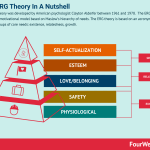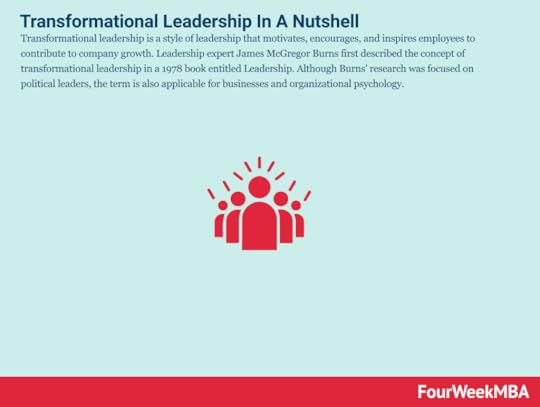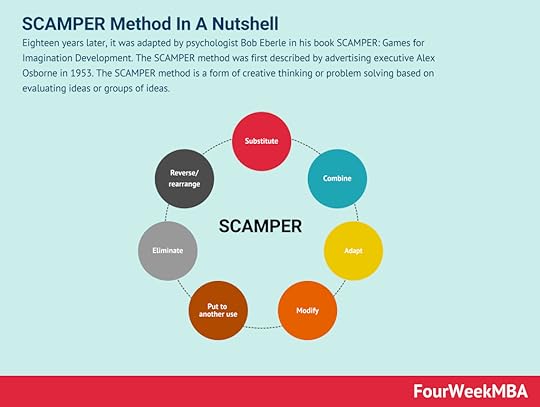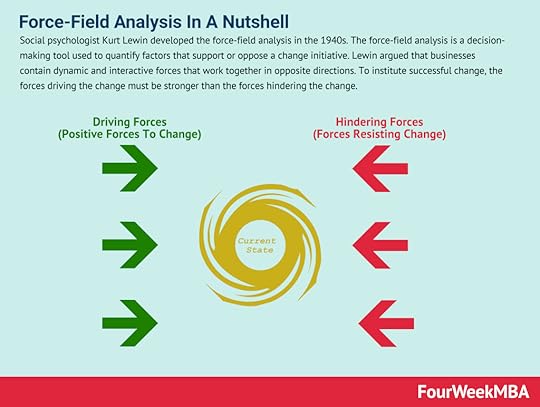What Is The ERG Theory? The ERG Theory In A Nutshell


The ERG theory was developed by American psychologist Clayton Alderfer between 1961 and 1978. The ERG theory is a motivational model based on Maslow’s hierarchy of needs. The ERG theory is based on an acronym of three groups of core needs: existence, relatedness, growth.
Understanding the ERG theoryThe ERG theory was developed by American psychologist Clayton Alderfer between 1961 and 1978.
ERG theory is an extension of Maslow’s hierarchy of needs, which Alderfer refined in line with empirical research on motivation over seventeen years. After concluding his research, Alderfer simplified Maslow’s five-level interpretation into a three-level hierarchy.
He also stipulated three fundamental differences to Maslow’s model:
Different levels of need could be pursued simultaneously, with no requirement for an individual to start from the bottom of Maslow’s pyramid and work their way up.The order of needs were not fixed but instead varied from person to person.The ERG theory also noted that if a higher level need remained unfulfilled, the individual could regress to a lower level need to increase satisfaction. This became known as the frustration-regression principle.In the context of employee motivation, Alderfer suggested the frustration-regression principle negatively impacts motivation and personal growth. As a result, the ERG theory has an important role to play in employee morale, productivity, and predicting sources of workplace conflict.
More broadly speaking, Alderfer’s work may also be useful to analyze different leadership styles or help employees transition through change.
The three groups of needs comprising the ERG theoryThe ERG theory is based on an acronym of three groups of core needs. These are:
Existence – or the basic material requirements for living. Maslow categorized these as physiological needs (food, water, shelter) and safety needs (health, employment, property). When these needs are met in the workplace, they remove distractions and boost productivity. Relatedness – or needs related to the maintenance of interpersonal relationships. These needs align with Maslow’s third and fourth levels which encompass friendship, family, intimacy and gaining the respect of others. In a work environment, relatedness is a need to have satisfactory or mutually beneficial relationships with colleagues, superiors, or subordinates.Growth – or the need for personal development through meaningful or creative work. This is an intrinsic desire for most people and has obvious benefits in workplace and non-workplace settings. Growth is related to Maslow’s upper level which contains self-esteem, self-confidence, discovery, morality, and achievement.It’s also important to note that each of the three groups has been studied extensively since the ERG theory was released.
With their effectiveness verified several times over, the most successful organisations will be those that create an environment where all three levels are available to every employee at all times.
ERG theory examplesTo conclude, we will share two representative examples of how ERG theory can be used to assist employees and organizations.
Start-up entrepreneurThe life of a start-up entrepreneur (and indeed the start-up itself) is almost exactly aligned with the key components of ERG theory.
In the early days of the venture, the entrepreneur and business endeavor to meet basic needs.
For the individual, this may be a living salary that pays the bills. For the business, its needs are raw materials, electricity, and a physical or online presence to conduct operations.
With these important needs in place, the start-up can establish a presence in the market, develop relationships with suppliers, and collaborate with other institutions to innovate and increase sales.
With their basic needs covered, the start-up founder can start to create a professional network and hire the best talent to share their immense workload.
In the third and final growth stage, the start-up founder is supported by a team of subordinates who attend to less critical needs.
This frees them up to fulfil their potential in areas where they can make the most impact. For the business, growth tends to be characterized by market leadership, better margins, and increased size.
Unmotivated employeeThe ERG theory can also be used to tackle the problem of unmotivated employees. For better or worse, many employees earn a salary that covers basic survival needs such as food and shelter but little else.
Those who are worried about paying their mortgage each month tend to be less interested in socializing with others since it is too expensive to do so. However, a lack of socialization causes a deficiency in the second basic need of relatedness.
This may result in the employee feeling excluded from social circles at work which then causes a decrease in collaboration, motivation, and productivity.
To enable the employee to meet the needs of relatedness and growth, the business could look at more inclusive work practices and, if their performance merits it, a promotion or salary increase.
Businesses are now also turning to companies such as Nudge that provide financial literacy training to increase the well-being of employees.
Alternatively, the business could ask the employee whether they would be open to moving into another position or department.
Finding themselves in a role that better suits their unique skillset, they may become more motivated to engage with other employees and work productively toward organizational goals.
Career choicesIn the final example, consider an employee who wants to determine the best career choice for their needs and skills.
The individual starts with existence-related needs to first determine how much money they require to cover their expenses.
Based on this information, industries with average salaries in the desired range can be identified.
In terms of relatedness, the person thinks about their social needs and whether they are introverted or extroverted.
They also look for employers with desirable workplace cultures where managers and subordinates work collaboratively.
Lastly, the potential for career development and opportunities to advance within the company is assessed.
Since the individual works best under pressure where every day is different from the next, they look for dynamic businesses with ambitious mission statements and objectives.
Key takeaways:The ERG theory is a motivational model developed by American psychologist Clayton Alderfer and is the result of seventeen years of empirical research.The ERG theory was developed in the context of employee motivation, but it may also have applications in change management, conflict resolution, and leadership style influence.The ERG theory is based on three core needs: existence, relatedness, and growth. For maximum organizational effectiveness, each need must be available to every employee at all times.Connected Business Frameworks To The ERG Theory Maslow’s Hierarchy of Needs was developed by American psychologist Abraham Maslow. His hierarchy, often depicted in the shape of a pyramid, helped explain his research on basic human needs and desires. In marketing, the hierarchy (and its basis in psychology) can be used to market to specific groups of people based on their similarly specific needs, desires, and resultant actions.
Maslow’s Hierarchy of Needs was developed by American psychologist Abraham Maslow. His hierarchy, often depicted in the shape of a pyramid, helped explain his research on basic human needs and desires. In marketing, the hierarchy (and its basis in psychology) can be used to market to specific groups of people based on their similarly specific needs, desires, and resultant actions. Transformational leadership is a style of leadership that motivates, encourages, and inspires employees to contribute to company growth. Leadership expert James McGregor Burns first described the concept of transformational leadership in a 1978 book entitled Leadership. Although Burns’ research was focused on political leaders, the term is also applicable for businesses and organizational psychology.
Transformational leadership is a style of leadership that motivates, encourages, and inspires employees to contribute to company growth. Leadership expert James McGregor Burns first described the concept of transformational leadership in a 1978 book entitled Leadership. Although Burns’ research was focused on political leaders, the term is also applicable for businesses and organizational psychology. Monroe’s motivated sequence was created by American psychologist Alan Monroe, who had an interest in persuasive speech delivery. Monroe’s motivated sequence uses the psychology of persuasion to develop an outline for delivering speeches.
Monroe’s motivated sequence was created by American psychologist Alan Monroe, who had an interest in persuasive speech delivery. Monroe’s motivated sequence uses the psychology of persuasion to develop an outline for delivering speeches. The SQ3R method is a reading comprehension strategy that promotes enhanced learning. The SQ3R method was first proposed by educational psychologist Francis P. Robinson in his book Effective Study. The method was originally designed for college students as a more efficient and active means of absorbing textbook information. However, it is useful in any scenario where the retention of information is important. This allows the reader to learn effectively and make the best use of their time.
The SQ3R method is a reading comprehension strategy that promotes enhanced learning. The SQ3R method was first proposed by educational psychologist Francis P. Robinson in his book Effective Study. The method was originally designed for college students as a more efficient and active means of absorbing textbook information. However, it is useful in any scenario where the retention of information is important. This allows the reader to learn effectively and make the best use of their time. Eighteen years later, it was adapted by psychologist Bob Eberle in his book SCAMPER: Games for Imagination Development. The SCAMPER method was first described by advertising executive Alex Osborne in 1953. The SCAMPER method is a form of creative thinking or problem solving based on evaluating ideas or groups of ideas.
Eighteen years later, it was adapted by psychologist Bob Eberle in his book SCAMPER: Games for Imagination Development. The SCAMPER method was first described by advertising executive Alex Osborne in 1953. The SCAMPER method is a form of creative thinking or problem solving based on evaluating ideas or groups of ideas. The Pygmalion effect is a psychological phenomenon where higher expectations lead to an increase in performance. The Pygmalion effect was defined by psychologist Robert Rosenthal, who described it as “the phenomenon whereby one person’s expectation for another person’s behavior comes to serve as a self-fulfilling prophecy.”
The Pygmalion effect is a psychological phenomenon where higher expectations lead to an increase in performance. The Pygmalion effect was defined by psychologist Robert Rosenthal, who described it as “the phenomenon whereby one person’s expectation for another person’s behavior comes to serve as a self-fulfilling prophecy.” The recognition heuristic is a psychological model of judgment and decision making. It is part of a suite of simple and economical heuristics proposed by psychologists Daniel Goldstein and Gerd Gigerenzer. The recognition heuristic argues that inferences are made about an object based on whether it is recognized or not.
The recognition heuristic is a psychological model of judgment and decision making. It is part of a suite of simple and economical heuristics proposed by psychologists Daniel Goldstein and Gerd Gigerenzer. The recognition heuristic argues that inferences are made about an object based on whether it is recognized or not. Social psychologist Kurt Lewin developed the force-field analysis in the 1940s. The force-field analysis is a decision-making tool used to quantify factors that support or oppose a change initiative. Lewin argued that businesses contain dynamic and interactive forces that work together in opposite directions. To institute successful change, the forces driving the change must be stronger than the forces hindering the change.
Social psychologist Kurt Lewin developed the force-field analysis in the 1940s. The force-field analysis is a decision-making tool used to quantify factors that support or oppose a change initiative. Lewin argued that businesses contain dynamic and interactive forces that work together in opposite directions. To institute successful change, the forces driving the change must be stronger than the forces hindering the change.Main Free Guides:
Business ModelsBusiness StrategyBusiness DevelopmentDigital Business ModelsDistribution ChannelsMarketing StrategyPlatform Business ModelsTech Business ModelThe post What Is The ERG Theory? The ERG Theory In A Nutshell appeared first on FourWeekMBA.



